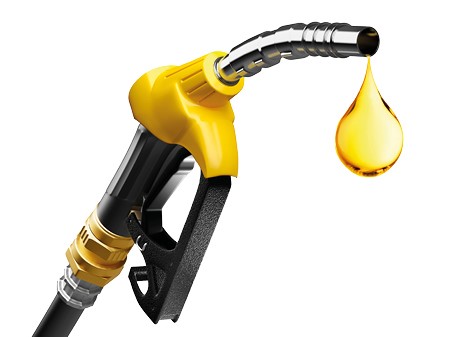
Liquid gold
Not much escapes the attention of Organised Crime Groups (OCGs) and other criminals when it comes to spotting an opportunity to make money from targeting innocent victims. The latest example of their agility and market awareness is reflected in the spike in fuel thefts across the EMEA region as diesel prices have escalated by up to 50% as a consequence of the Ukraine-Russia conflict.
If you’re in the road transport industry, fuel thefts won’t come as ‘breaking news’. Over many years, they’ve become a frustrating and costly occupational hazard but, overall, recorded incident rates have remained low versus other types of crime involving trucks. Cases of OCGs using generators and large drums to siphon off entire tanks of fuel are considered to represent only 1-2% of fuel thefts. The rest are attributed to ‘skimming’, involving the loss of much smaller quantities of fuel on a frequent basis using a simple siphoning tube and a container. It’s quicker to facilitate and harder to spot due to built-in tolerances.
Of course, as with all forms of crimes, various anti-siphon devices are now available to help restrict large-scale fuel thefts, while telematics and fuel monitoring systems can be another effective countermeasure, but these require an almost instant response if you’re to have any hope of intercepting fuel thieves at the scene of the crime.
While it can’t be considered a conventional cargo crime, one recent case in the United Kingdom served to demonstrate how high the ‘fuel stakes’ has become. Earlier this month, on 7 April, over £250,000 (€300,000) of diesel was stolen from a warship at Her Majesty’s Naval Base Devonport in the southwest of the country, representing one of Britain’s biggest fuel thefts.
So, if warships at naval bases are now a target, what hope does that leave for the lonesome truck driver parked up in a layby overnight? Or the fuel tanks in the yards of transport companies, particularly SME-sized businesses without the higher levels of on-site security as their bigger competitors. With fuel often accounting for up to 40% of a transport operator’s business costs, regular or substantial individual fuel losses can have a devastating economic impact.
Sadly, once again, it is frontline drivers who are facing the most severe risks from crime groups, which not only target vehicles and the goods inside but, now, the very thing that keeps them moving, too.
TAPA EMEA has identified many troubling reports in recent weeks of attacks on drivers who have become innocently caught up in fuel theft incidents while they took night-time sleep breaks in their cabs. These include cases of drivers being held at knifepoint, axed in the knee and ’gassed into unconciousness’ by criminals prepared to go to any lengths to steal fuel.
According to The Sun national newspaper in the UK, the national policing unit NaVCIS recorded 1,067 fuel thefts in 2021 causing a total loss of £2.2 million (€2.6m). But, like all forms of cargo crime, the figure was considered by industry experts as a ‘gross underestimation’ of such incidents, due to a lack of reporting. Data recorded by the TAPA EMEA Intelligence System (TIS) faces a similar ‘reporting’ challenge but within days of adding ‘Fuel Theft’ as a TIS product type to more clearly record losses, the Association was able to immediately identify 28 crimes, 13.6% of all cargo crimes in March, including a single loss of fuel worth €150,000 from a site in Dourges in the Hauts-de-France region of France.
Other crimes notified to TIS in March included:
- 1 March – offenders siphoned 400 litres of fuel from a truck parked at a service station in Oirschot, North Brabant, in The Netherlands.
- Thieves attempted to steal fuel from a truck on the A-13 near Mantes-la-Jolie in Île-de-France on 4 March after deceiving the driver into believing the vehicle had a flat tyre. The tanker driver was slightly injured in the subsequent altercation but managed to escape and the offenders fled empty-handed.
- 8 March – fuel worth over €29,000 was stolen from a logistics facility in Newcastle-upon-Tyne, UK.
- On the same day, three offenders were arrested for siphoning 300 litres of fuel from a truck in Viriat in eastern France.
- 14 March – 250 litres of fuel was siphoned from a truck in Fricourt, northern France.
- 700 litres of fuel was reported stolen after thieves siphoned diesel from six trucks parked at an Origin Facility in Honguemare-Guenouville, France, also on 14 March.
- 300 litres of fuel was taken from a truck in Abbeville, France, on 15 March.
- 150 litres of fuel was siphoned from a truck in Razlog, Bulgaria, on 16 March.
- On 18 March, police officers arrested three suspects for siphoning fuel from a truck in Limoges, France.
- In Germany, on 18 March, 200 litres of diesel was also taken from a truck parked at a motorway rest area in Wittenburg, Saxony-Anhalt.
- In Bruneham, Hauts-de-France, a truck parked overnight on a public road had 600 litres of fuel stolen overnight on 21 March.
- Two suspects were arrested after attempting to steal fuel from a truck in Tourcoing in northern France, on 22 March.
- In Isques, Hauts-de-France on 27 March, officers opened fire on a group of fuel thieves as they were siphoning diesel from trucks at the Isques tollbooth parking lot.
- In Bridgnorth, Shropshire, in the UK, a group of offenders entered a haulier’s yard and siphoned fuel from a bulk diesel storage tank.
These incidents followed earlier intelligence to TAPA EMEA of fuel thefts in the UK, where losses of so-called ‘liquid gold’ were costing businesses losses of hundreds of thousands of euros. One UK media report into a spate of attacks reported cases of truck drivers being gassed in their cabs to allow thieves to take their fuel, and another case of a driver being threatened with a knife after he saw people loitering around his vehicle. Another M.O. in the UK involves streetlights being switched off to give offenders the cover of darkness. In an even more extreme case, thieves used a pipe nearly one kilometre long to siphon fuel away from the premises of a transport company.
High-speed pumps used by organised criminal gangs can silently drain 1,000 litres of fuel per minute.
In just 10 minutes, one report stated, they can drain 10,000 litres worth £17,000 at the pumps. Even at discounted ‘black market’ prices, it’s a quick and easy way for criminals to profit. The owner of one transport company said his vehicles were only now working during the day to avoid becoming a target when drivers took night-time rest breaks. While trucks parked in laybys are an obvious target, secure parking areas are not seen to be ‘out of bounds’ for fuel thieves using trucks with false number plates and GPS jammers to cover their tracks. Criminals have also reportedly used fake roadside breakdown recovery services’ uniforms to gain entry.
With fuel prices remaining at a year-on-year high, this wave of cargo crime is expected to continue.
HAVE YOU BEEN A VICTIM OF FUEL THEFT?
The TAPA EMEA Intelligence System (TIS) now has a dedicated product category to record fuel thefts. If you have been a victim or have incident information to share, please contact tisteam@tapaemea.org






















